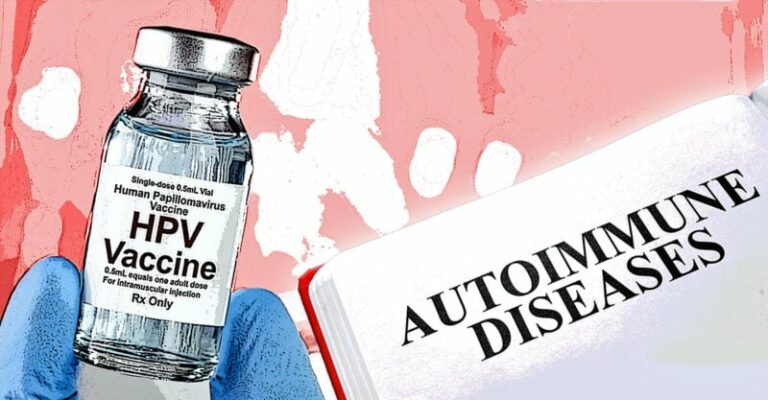Long-term Exposure to Toxic Pesticides Alters Gut Microbiome, Metabolism
A new study published in Environmental Health builds on existing research assessing the relationship between long-term exposure to organophosphorus pesticides — widely used in food production, homes and gardens — and the human gut microbiome.
Source The Defender, May 1, 2024, originally from Beyond Pesticides
Researchers build on existing research when assessing the relationship between long-term exposure to organophosphorus pesticides — widely used in food production, homes and gardens — and the human gut microbiome.
In a new study published in Environmental Health, an interdisciplinary research team from the University of California, Los Angeles, determined, “that exposure to [organophosphorus pesticides] is associated with changes in the abundance of several bacterial groups and differential functional capacity in metabolic pathways supported by the human gut microbiome.”
The study draws upon data from a “Parkinson’s, Environment and Gene study (PEG)” in which 190 participants were asked to submit fecal samples and answer interview questions.
The researchers added:
“The study was initially designed to investigate the etiology of Parkinson’s disease (PD) and participants were recruited in two study waves [‘over the full 10-year exposure window’]: 2001–2007 and 2012–2017.
“At baseline, [Parkinson’s disease] patients were diagnosed within the past 5 years and randomly selected community controls were also recruited,” the research team shares in their Methodology section.
“Since 2017, we invited previous study participants who could be contacted to enroll in a pilot study of the gut microbiome. In addition, we invited a household or community member of [Parkinson’s] patients to participate.”
To be eligible for the study, it was determined that the participants did not have the following:
- Acute/chronic gastrointestinal conditions.
- An immunocompromised state and/or were taking immunosuppressants.
- Antibiotic intake continuously or within the past three months.
The collection kit for the research was based on a protocol developed under the Microbiome Core of the Goodman-Luskin Microbiome Center. The microbiome was assessed through bacterial DNA found in the fecal samples.
A software, PICRUSt2 was used to identify 16S RNA markers — “metagenomic profile of the gut microbiome” — to make predictions on relationships between pesticides and their genetic impacts.
For the pesticide exposure assessment component, researchers use a geographic information system method with data from California Pesticide Use Reporting, land-use survey data from California’s Public Land Survey System and residential use data from the participants.
Researchers found:
“Most abundance changes at the genus level associated with high ambient [organophosphorus pesticide] exposure belong to Lachnospiraceae (seven genera were increased and two were decreased) and Ruminococcaceae (3 genera were increased and 2 were decreased) families in the Clostridia class.”
This is significant given these two families are related to anaerobic bacteria present in individuals with healthy gut microbiomes as they produce short-chain fatty acids (SCFAs):
“Critical in maintaining the homeostasis of the gut microbiome including gut barrier integrity, immunomodulation and regulation of the metabolism of lipids, cholesterol and glucose …
“The production of SCFAs is determined by the type of dietary fibers, the fermenting bacteria, the gut environment, and the substrate …
“Therefore, it is possible that the observed changes in SCFA-producing bacteria are an indicator of disturbed homeostasis of the gut environment due to chronic OP [organophosphorus pesticide] exposure, and the body’s response to such changes.”
This study builds on existing scientific evidence analyzing the impact of toxic pesticides on human health pertaining specifically to the gut microbiome.
For example, in a 2023 study released in ISME Journal, researchers determined that the gut and the brain are deeply integrated through the vagus nerve and the neuroendocrine system.
The vagus nerve is a treelike bundle of fibers extending from the lower part of the brain to nearly every body organ, but particularly the heart, lungs and digestive tract.
The neuroendocrine system comprises specialized cells inhabiting nearly all the organs of the body that respond to signals from the brain and gut to produce hormones that regulate digestive enzymes, the pace of digestion, air and blood flow in the lungs, blood pressure, heart rate, blood glucose levels and other functions.
Moreover, Dr. Demetrio Sierra-Mercado shared findings from research originally published in 2022 in the Federation of American Societies for Experimental Biology, aimed at documenting the relationship between glyphosate exposure and gut health.
Sierra-Mercado noted how even exposure levels that fall within the realm of “safe” can lead to anxiety-like behaviors and alter the delicate balance of gut microbiota. Pesticide exposure has been linked to other adverse health impacts on the gut, including irritable bowel syndrome (IBS).
A 2023 study published in Environmental Toxicology and Pharmacology determined that populations living near intensive agricultural operations face higher levels of toxic pesticide exposure (i.e., chlorpyrifos, N-methyl carbamates, macrocyclic lactones, neonicotinoids, pyrethroids, [di] thiocarbamates, conazoles, dicarboximide, anilino-pyrimidines, copper salts, bipyridyl [paraquat, diquat], organophosphates [glyphosate], chlorotriazine and phenylurea) simultaneously faced higher rates of IBS compared to populations living in areas of low pesticide use and exposure.
Microbiome health for pollinators is also impacted, as documented in a 2022 study published in Science of the Total Environment.
Bees subjected to sulfoxaflor and azoxystrobin in combination experienced significantly reduced survival when compared to a sole sulfoxaflor exposure, underscoring the importance of studying chemical mixtures in holistically assessing health-based consequences of pesticide exposure.
Bees were exposed to field-relevant levels of each pesticide per U.S. Environmental Protection Agency data, as well as combinations of pesticides for a period of 10 days through sugar water.
A separate experiment on the honeybee gut microbiome was constructed using newly emerged bees, which were housed and reared separately, and then exposed to a similar pesticide treatment as the initial experiment.
See Beyond Pesticides’ Daily News blog sections on microbiota and microbiome for further documentation of scientific literature and health impacts.
The continuous growth and adoption of organic agricultural and land management practices is a hopeful sign of systems change away from the chemical treadmill and dependence on petrochemical-based toxic pesticides.
Yet advocates are weary of piecemeal bans when the foundation of inaction stems from a failed regulatory system that permits the use of toxic pesticides.
See Tools for Change to discover resources and strategies to organize your community against toxic pesticide use.
See Eating with a Conscience to learn more about potential pesticide exposure on commonly consumed fruits and vegetables.
For the latest scientific literature on adverse health impacts of herbicides, pesticides and fungicides, see Gateway on Pesticide Hazards and Safe Pest Management and Pesticide-Induced Disease Database.
Originally published by Beyond Pesticides.
Suggest a correction







